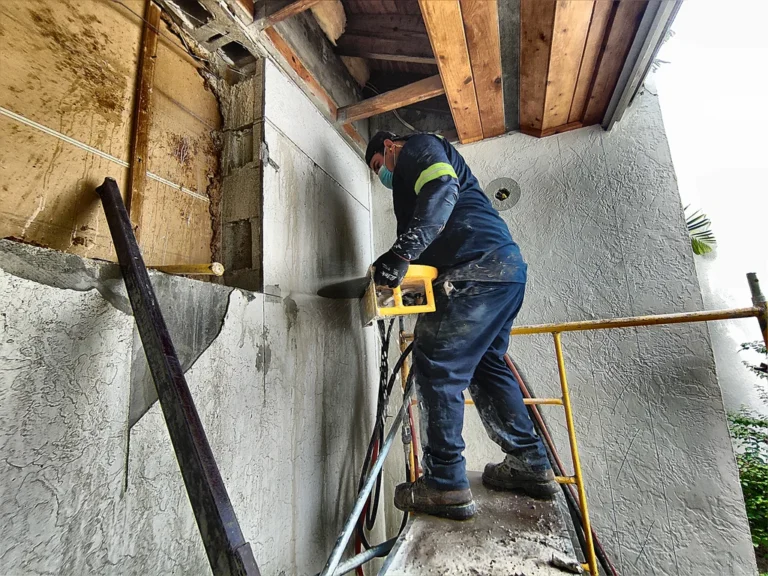Scupper holes play a vital role in preventing water damage on flat or low-slope roofs by providing proper drainage. In this article, we’ll explore how to determine if your building needs scupper holes and examine some real-world examples to illustrate their importance. At Concrete Cutting Miami, we are committed to helping our clients in the Miami, Broward, and Florida Keys areas maintain their buildings’ structural integrity. To learn more, call or text us at 888-828-8646 and follow us on social media.
Scupper holes, or roof drains, are essential components of a building’s drainage system. They help direct water away from the roof surface and into downspouts, reducing the risk of leaks and potential structural damage. However, not every building requires scupper holes, as their necessity depends on factors such as the roof’s design and local building regulations. Let’s delve into how you can determine if your building needs scupper holes and examine some real-world examples that demonstrate their significance.
Identifying the Need for Scupper Holes
To assess whether your building needs scupper holes, consider the following factors:
Roof Type and Slope
Scupper holes are primarily used on flat or low-slope roofs where water may not drain effectively due to insufficient slope. Inspect your building’s roof to determine its type and slope, and consult with a roofing professional if necessary. Buildings with pitched roofs typically do not require scupper holes, as water drains more efficiently through gutters and downspouts.
Local Building Codes and Regulations
Review your local building codes and regulations, as they may specify requirements for roof drainage systems, including scupper holes. These codes are designed to ensure that buildings adhere to safety standards and best practices for water management.
Existing Drainage System
Examine your building’s current drainage system, which may include gutters, downspouts, and interior drains. Assess its effectiveness by checking for signs of water damage, ponding water, or overflowing gutters. If you notice any issues, consider adding scupper holes to improve drainage and prevent further damage.
Real-World Examples
To better understand the importance of scupper holes, let’s examine a few real-world examples:
Example 1: Commercial Building with Flat Roof
A commercial building in Miami with a large, flat roof experienced recurring water damage due to poor drainage. After inspecting the roof, it was determined that the existing interior drains were insufficient for managing the volume of water during heavy rainfall. By installing scupper holes along the roof’s perimeter, the building’s drainage system was significantly improved, preventing further water damage and costly repairs.
Example 2: Residential Complex with Low-Slope Roof
A residential complex in Broward County with a low-slope roof experienced issues with water pooling on the roof, leading to leaks and mold growth. After consulting with a roofing professional, scupper holes were added to enhance the building’s drainage capacity, addressing the water pooling issue and minimizing the risk of future leaks.
Example 3: Historic Building Renovation
A historic building undergoing renovation in the Florida Keys required an updated drainage system to preserve its structural integrity. The building’s original design included a flat roof with insufficient drainage, putting it at risk for water damage. Scupper holes were incorporated into the renovation plans, ensuring effective drainage while preserving the building’s architectural heritage.
Scupper holes are crucial components of a building’s drainage system, especially for flat or low-slope roofs. By assessing factors such as roof type, local building codes, and the effectiveness of your existing drainage system, you can determine if your building needs scupper holes. Don’t hesitate to consult with a professional to ensure the best solution for your specific situation.
For more information on maintaining your building’s structural integrity and preventing water damage, follow Concrete Cutting Miami on social media and visit our blog for in-depth articles on a variety of topics. If you need assistance with your building’s drainage system or have any questions, call or text us at 888-828-8646. We are dedicated to serving clients in the Miami, Broward, and Florida Keys areas, providing top-quality service and expertise.






